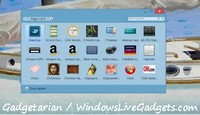Understanding emoticons and basic smileys
The word emoticon comes from emotion and icon. The use of emoticons can be traced back to the 19th century. Digital forms of emoticons on the Internet were included by Scott Fahlman in a message on 19 September 1982. He was the first documented person to use the emoticons :-) and :-(, with a specific suggestion that they be used to express emotion.
Usually, emoticons in Western style have the eyes on the left, followed by nose and the mouth. The two character version :) which omits the nose is also very popular.
There are also some possible variations to emoticons to get new definitions, like changing a character to express a new feeling, or slightly change the mood of the emoticon.
For example :( equals sad and :(( equals very sad or weeping. A blush can be expressed as :”> . Others include wink ;), a grin :D, smug :->, and tongue out :P for disgust or simply just to stick the tongue out for silliness, such as when blowing a raspberry. An often used combination is also <3 for a heart, and </3 for a broken heart.
